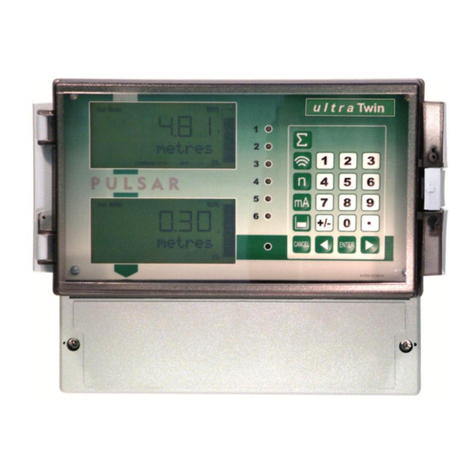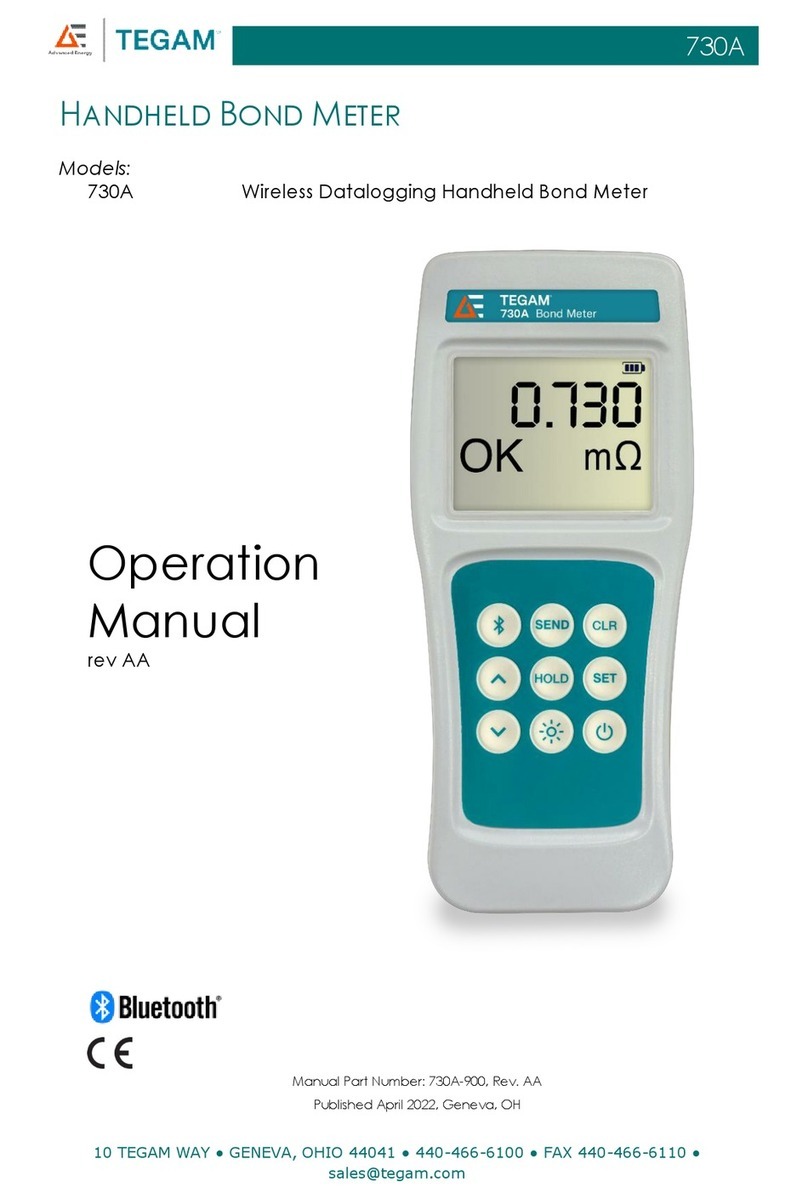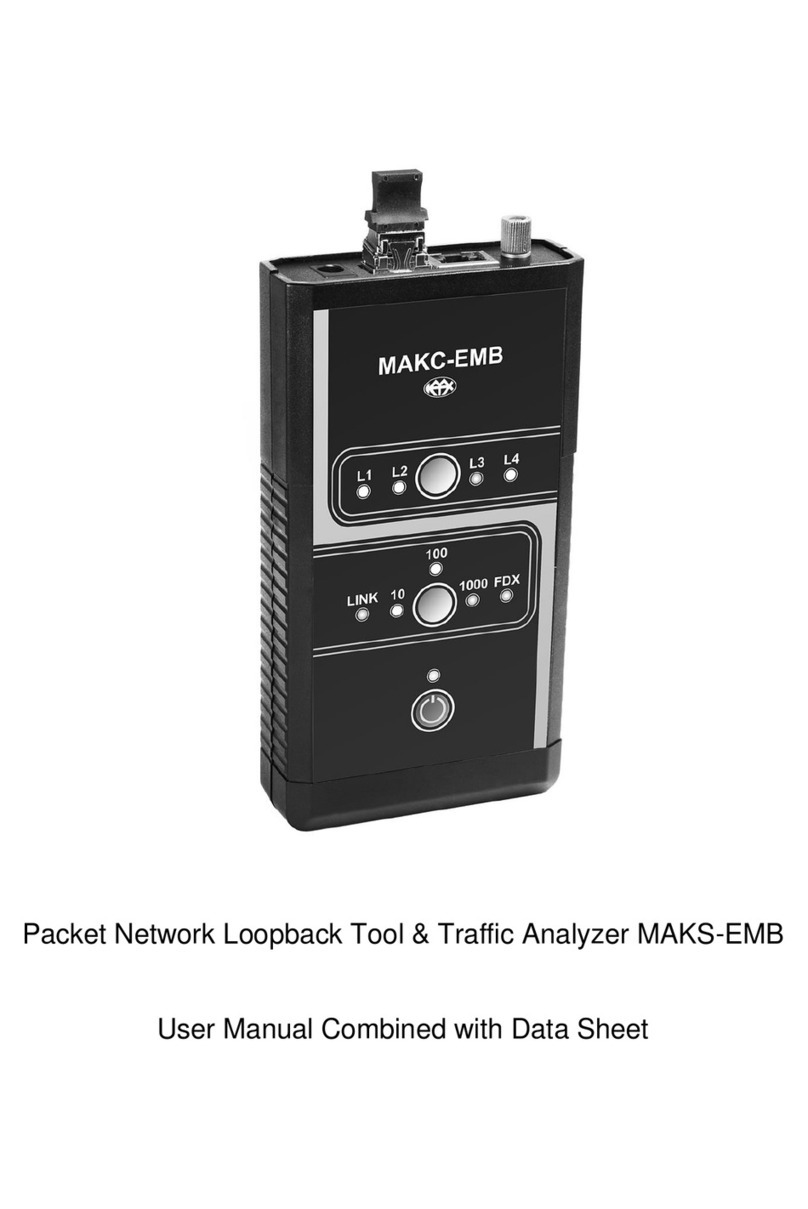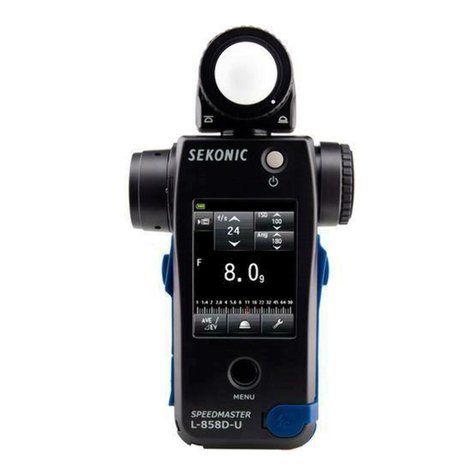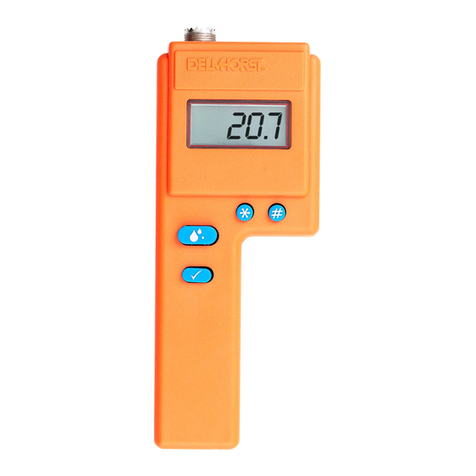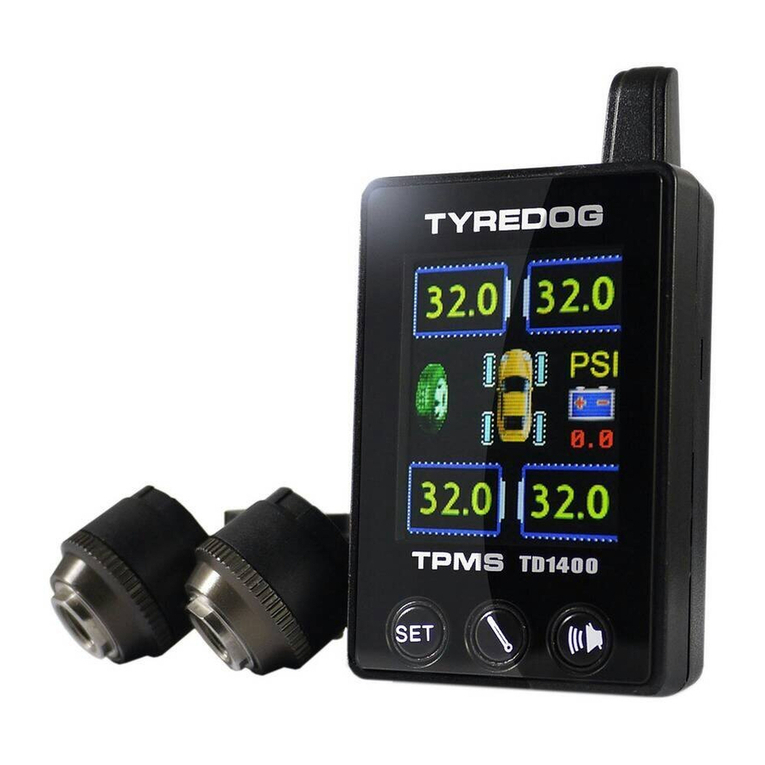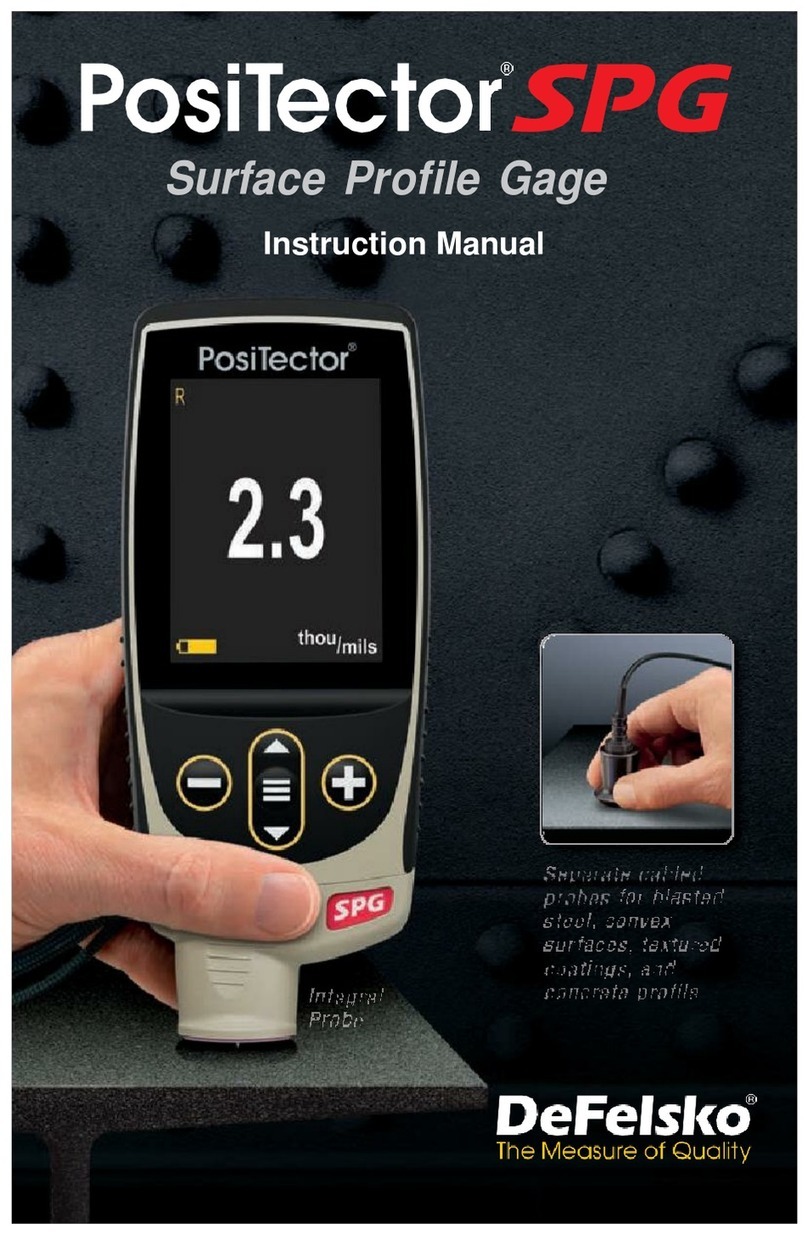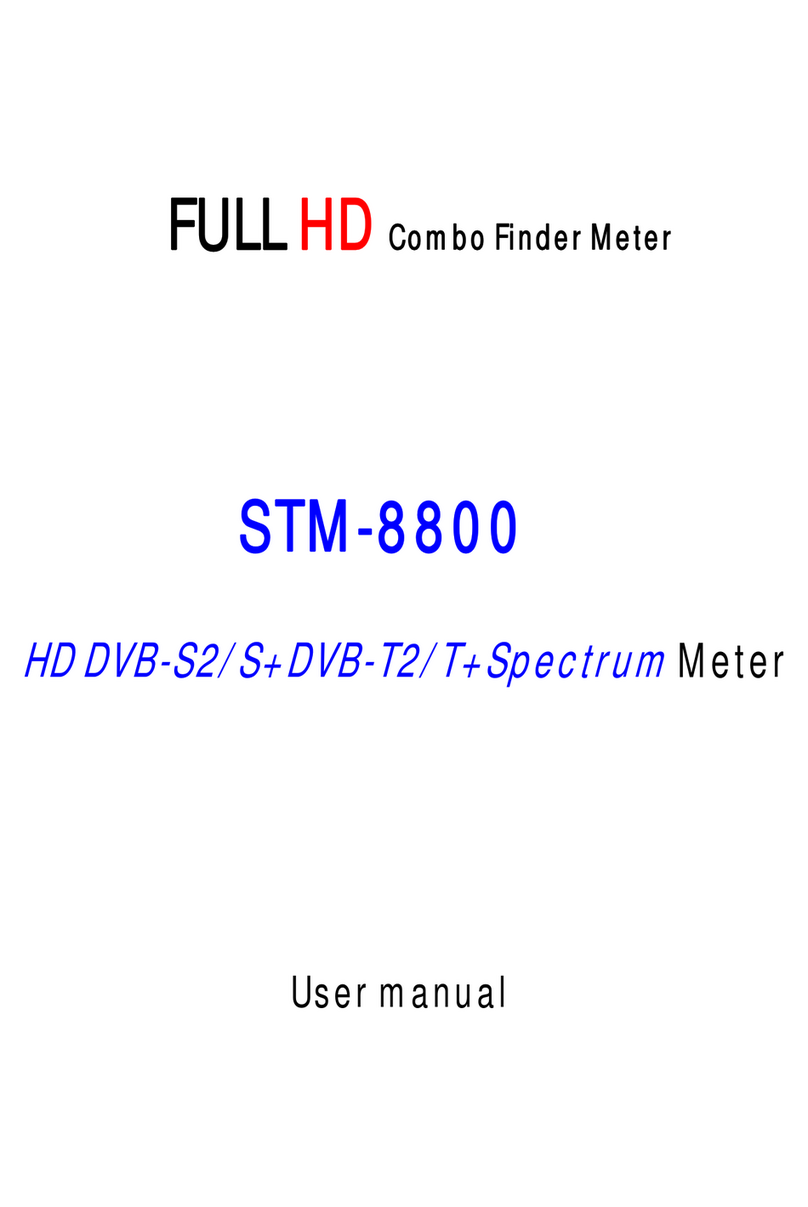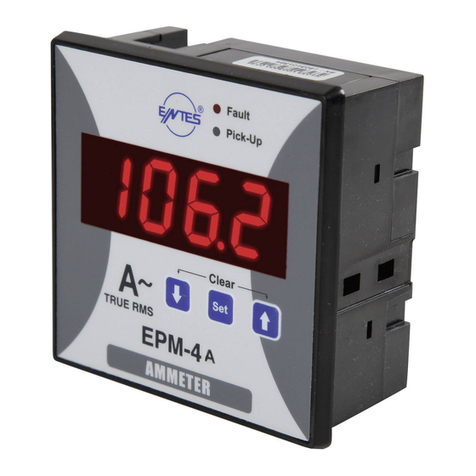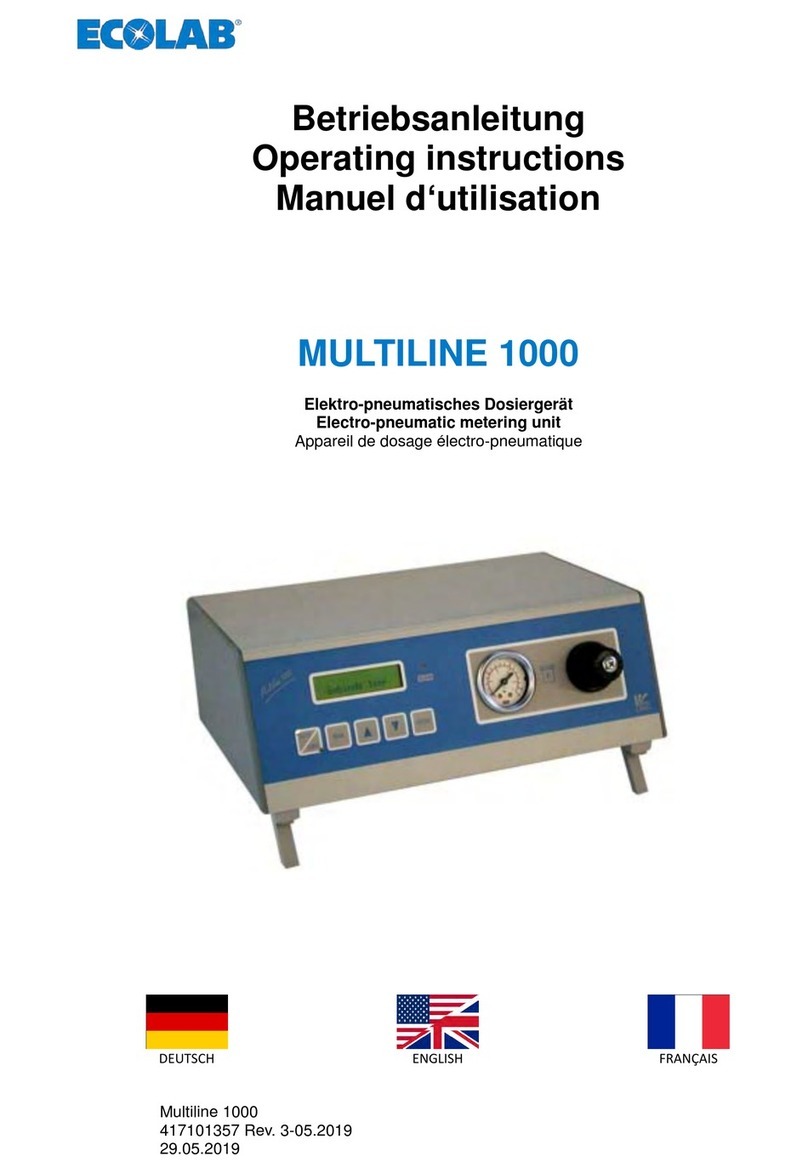Good Will Instrument GSP-827 User manual

2.7GHz Spectrum Analyzer
Model: GSP-827
Operation Manual
GW Part No. 82SP-82700MA
99 Washington Street
Melrose, MA 02176
Fax 781-665-0780
TestEquipmentDepot.com

EC Declaration of Conformity
We
GOOD WILL INSTRUMENT CO., LTD.
No. 95-11, Pao-Chung Rd., Hsin-Tien City, Taipei Hsien, Taiwan
GOOD WILL INSTRUMENT (SUZHOU) CO., LTD.
No. 69, Lushan Road, Suzhou New District Jiangsu, China
declares that the below mentioned product
GSP-827
is herewith confirmed to comply with the requirements set out in the Council
Directive on the Approximation of the Law of Member States relating to
Electromagnetic Compatibility (89/336/EEC, 92/31/EEC, 93/68/EEC) and Low
Voltage Equipment Directive (73/23/EEC, 93/68/EEC). For the evaluation
regarding the Electromagnetic Compatibility and Low Voltage Equipment
Directive, the following standards were applied:
◎EMC
EN 61326-1: Electrical equipment for measurement, control and laboratory
use –– EMC requirements (1997+A1: 1998+A2: 2001)
Conducted and Radiated
Emissions
EN 55011: 1998 class A
Electrostatic Discharge
EN 61000-4-2: 1995+A1:1998
Current Harmonic
EN 61000-3-2: 2000
Radiated Immunity
EN 61000-4-3: 1996+A1:1998
Voltage Fluctuation
EN 61000-3-3: 1995
Electrical Fast Transients
EN 61000-4-4: 1995
------------------------- Surge Immunity
EN 61000-4-5: 1995
------------------------- Conducted Susceptibility
EN 61000-4-6: 1996
------------------------- Power Frequency Magnetic Field
EN 61000-4-8 : 1993
------------------------- Voltage Dips/ Interrupts
EN 61000-4-11: 1994
◎Safety
Low Voltage Equipment Directive 73/23/EEC & amended by 93/68/EEC
Safety Requirements
EN 61010-1: 2001
IEC 61010-1: 2001

2.7GHz Spectrum Analyzer Operation Manual
1
TableofContents Pages
1.0 GENERAL DESCRIPTION AND FEATURES ........................................................................................................ 3
2.0 USAGE PRECAUTIONS AND RECOMMENDATIONS .......................................................................................4
3.0 PRODUCT OPTION INFORMATION ...................................................................................................................... 8
4.0 FIRST TIME USE.......................................................................................................................................................... 9
4.1 INTERNAL CALIBRATION SIGNAL ................................................................................................................. 9
4.2 INSTALL AND UNINSTALL THE BATTERY ................................................................................................. 10
5.0 PANEL DESCRIPTION ............................................................................................................................................. 11
5.1 FRONT PANEL DESCRIPTION ................................................................................................................................... 11
5.2 REAR PANEL DESCRIPTIONS ................................................................................................................................... 13
6.0 QUICK USE GUIDE ................................................................................................................................................... 15
6.1 GENERAL DESCRIPTION .......................................................................................................................................... 15
6.2 GUIDE ..................................................................................................................................................................... 15
6.2.1 FIND THE SIGNAL ................................................................................................................................................. 15
6.2.2 FIND PEAK SIGNAL............................................................................................................................................... 15
6.2.3 TRACK PEAK SIGNAL ........................................................................................................................................... 16
6.2.4 MAKE CORRECT AMPLITUDE MEASUREMENT ....................................................................................................... 16
6.2.5 75ΩSYSTEM MEASUREMENT ............................................................................................................................... 16
6.2.6 MULTI-MARKER OPERATION ................................................................................................................................16
6.2.7 DELTA-MARKER OPERATION ............................................................................................................................... 17
6.2.8 PEAK HOLD,AVERAGE AND FREEZE THE MEASUREMENT .................................................................................... 17
6.2.9 ACPR MEASUREMENT......................................................................................................................................... 17
6.2.10 OCBW MEASUREMENT ..................................................................................................................................... 18
6.2.11 PASS/FAIL TEST BY LIMIT LINE.......................................................................................................................... 18
6.2.12 EDIT THE LIMIT LINE, ........................................................................................................................................ 19
6.2.13 CHANGE RBW, VBW AND SWEEP TIME ............................................................................................................ 19
6.2.14 TRIGGER BY INPUT SIGNAL LEVEL ...................................................................................................................... 19
6.2.15 TRIGGER BY EXTERNALLY STIMULUS SIGNAL .................................................................................................... 20
6.2.16 OBSERVE TWO SWEEPS (EX,2ND HARMONIC)BY DUAL WINDOWS...................................................................... 20
6.2.17 CONFIGURE DISPLAY SETTING ........................................................................................................................... 20
6.2.18 SAVE MEASUREMENT/SETUP TO MEMORY ......................................................................................................... 21
6.2.19 RECALL TRACE/SETUP TO MEMORY ................................................................................................................... 21
6.2.20 TURN ON/OFF THE INTERNAL CALIBRATION SIGNAL ........................................................................................ 21

2.7GHz Spectrum Analyzer Operation Manual
2
6.2.21 CALENDAR/CLOCK SETTING .............................................................................................................................. 21
6.2.22 PRESET SYSTEM ................................................................................................................................................. 22
6.2.23 SYSTEM INFORMATION....................................................................................................................................... 22
6.2.24 SYNCHRONIZED BY EXTERNAL REFERENCE SIGNAL .......................................................................................... 23
6.2.25 SYNCHRONIZE OTHER EQUIPMENTS.................................................................................................................... 23
6.2.26 TRACKING GENERATOR OPERATION (OPTION)................................................................................................... 23
7.0 MENU TREE................................................................................................................................................................ 24
7.1 MAIN FUNCTION ..................................................................................................................................................... 24
7.2 MEASUREMENT FUNCTION ..................................................................................................................................... 25
7.3 CONTROL FUNCTION............................................................................................................................................... 27
7.4 STATE FUNCTION .................................................................................................................................................... 28
8.0 OPERATION................................................................................................................................................................ 31
8.1 MAIN FUNCTIONS ................................................................................................................................................... 31
8.1.1 FREQUENCY FUNCTIONS ...................................................................................................................................... 31
8.1.2 SPAN FUNCTIONS ................................................................................................................................................. 36
8.1.3 AMPLITUDE.......................................................................................................................................................... 39
8.2 MEASUREMENT FUNCTIONS.................................................................................................................................... 43
8.2.1 MARKER .............................................................................................................................................................. 43
8.2.2 PEAK SEARCH ...................................................................................................................................................... 52
8.2.3 TRACE.................................................................................................................................................................. 57
8.2.4 PWR MEASUREMENT............................................................................................................................................ 61
8.2.5 LIMIT LINE........................................................................................................................................................... 68
8.3 CONTROL FUNCTIONS ............................................................................................................................................. 72
8.3.1 BW ...................................................................................................................................................................... 72
8.3.2 TRIGGER .............................................................................................................................................................. 74
8.3.3 DISPLAY FUNCTIONS ........................................................................................................................................... 77
8.3.3 DISPLAY FUNCTIONS ........................................................................................................................................... 78
8.3.4 SAVE/RECALL ...................................................................................................................................................... 80
8.4 STATE FUNCTIONS .................................................................................................................................................. 82
8.4.1 CALIBRATION ...................................................................................................................................................... 82
8.4.2 SYSTEM................................................................................................................................................................ 83
8.4.3 OPTION ................................................................................................................................................................ 87
8.4 POWER CONTROL.................................................................................................................................................... 92
8.5 DIAGNOSIS INFORMATION ON THE DISPLAY............................................................................................................ 92
9.0 SPECIFICATION…………………………………………………………………………………………………...
94

2.7GHz Spectrum Analyzer Operation Manual
3
1.0 General Description and Features
The GSP-827 is designed with the features as follows.
Synthesized-based design covering the frequency from 9kHz to 2.7GHz.
Low noise design: -140dBm/Hz noise floor.
4.5kg light weight and compact size.
100 traces and setup memories.
ACPR, OCBW, CHBW of power measurement.
11 ranges of external reference clock (64k~19.2M).
10 Markers with Peak, Peak Track, ΔMarker, Marker to Center functions.
External and Video Level Trigger with single and continuous modes.
Limit Line and Pass/Fail functions for quickly qualification test.
Spilt Windows extend the measurement flexibility.
Trace functions including Peak Hold, Average and Freeze.
Optional Tracking Generator provides frequency response measurement in one sweep.
Optional filters and Quasi- Peak detection provide EMI test.
GPIB and RS232 interface for ATE applications.
AC/DC dual modes power supply and Battery Operations.
The fully synthesized-based and low noise designs offer the high RF performance in
measurement. The plentiful measurement functions like 10 markers, traces, power
measurement, limit line, dual display and trigger make measurement more easily and quickly.
The 100 memories, real time calendar and battery operation realize the true portability. 11
ranges of external reference clock offer the synchronization capability to many telecom
standards. The optional Tracking Generator offers the frequency response test with the same
frequency band. The GPIB and RS232 interfaces allow the connection between the unit and
PC. Users can develop their own applications software. DC 12V power supply allows user to
carry this unit to drive around for frequency monitoring. Chargeable battery pack can support
the operation without power cord for 4 hours. With the carrying case, this unit is easy to carry
and operate in the filed service. 9k and 120k EMI filter and quasi-peak detector can perform
the EMC test. AM/FM Demodulation provides the demodulated outputs through both
headphone and speaker. Kit sets of connector adaptor offers the convenience under different
measurement conditions.
This unit offers the right combination of highly RF performance, plentiful function, easily
operated user interface and complete options to facilitate measurement in a wide range of
application in laboratory as well as in field service usage. This is another example of our
dedication to engineering excellence.

2.7GHz Spectrum Analyzer Operation Manual
4
2.0 Usage Precautions and Recommendations
The following precautions are recommended to insure your safety and provide the best
condition of GSP-827.
Safety Term and System
These terms may appear in this manual or on the product:
WARNING: Warning statements identify condition or practices that could result
in injury or loss of life
CAUTION: Caution statements identify conditions or practices that could
result in damage to this product or other property.
The following symbols may appear in this manual or on the product:
DANGER ATTENTION Protective Earth (ground)
High Voltage refer to
Manual
Conductor
Terminal
Terminal

2.7GHz Spectrum Analyzer Operation Manual
5
FOR UNITED KINGDOM ONLY
NOTE: This lead / appliance must only be wired by competent persons
WARNING: THIS APPLIANCE MUST BE EARTHED
IMPORTANT: The wires in this lead are coloured in accordance with the following code:
Green/ Yellow: Earth
Blue: Neutral
Brown: Live (Phase)
As the colours of the wires in main leads may not correspond with the colours marking identified in
your plug/appliance, proceed as follows:
The wire which is coloured Green & Yellow must be connected to the Earth terminal marked with
the letter E or by the earth symbol or coloured Green or Green & Yellow.
The wire which is coloured Blue must be connected to the terminal which is marked with the letter
N or coloured Blue or Black.
The wire which is coloured Brown must be connected to the terminal marked with the letter L or P
or coloured Brown or Red.
If in doubt, consult the instructions provided with the equipment or contact the supplier.
This cable/appliance should be protected by a suitably rated and approved HBC mains fuse: refer to
the rating information on the equipment and/or user instructions for details. As a guide, cable of
0.75mm2should be protected by a 3A or 5A fuse. Larger conductors would normally require 13A
types, depending on the connection method used.
Any moulded mains connector that requires removal /replacement must be destroyed by removal of
any fuse & fuse carrier and disposed of immediately, as a plug with bared wires is hazardous if a
engaged in live socket. Any re-wiring must be carried out in accordance with the information
detailed on this lable.
Use and Wear
CAUTION
•Do not exceed +30 dBm into the RF INPUT or +30 dBm reverse power into the TG OUTPUT.
•Do not place any heavy object on the instrument.
•Avoid severe impacts or rough handling that could damage the GSP-827.
•Use electrostatic discharge precautions while handling and making connections to the GSP-827.
•Do not place wires into the connectors of the GSP-827, only mating connectors and adapters.
•Do not block or obstruct cooling fan vent opening on side panels or on the rear panel of unit.
•This equipment is not for measurements performed for CAT II, III, and IV.

2.7GHz Spectrum Analyzer Operation Manual
6
1) Disassembly of the Instrument
•Do not disassemble the instrument; refer the instrument to a factory approved service facility
only.
2) AC Power Input
CAUTION
•AC input should be within the range of selected line voltage ± 10%.
•Insure the correct fuse is installed prior to applying voltage for the first time:
90 V ~ 132 VAC input : T 1A / 250V
198 ~ 250 VAC input : T0.5A / 250V
•Check the line voltage setting on the rear panel. If the line voltage does not match input voltage,
change as follows:
a) Remove AC Power Cord;
b) Open cover of AC socket with flat blade screwdriver;
c) Remove selector Cam Drum and rotate to the correct voltage selection
d) Replace Cam Drum.
3) Grounding
WARNING
•To avoid electrical shock, the power cord protective grounding conductor must be connected to
earth ground.
4) Fuse Replacement
WARNING
•For continued fire protection, replace the fuse with the specified type and rating only.
•Disconnect power cord before replacing fuse.
•If the fuse is blown, there is something wrong with the instrument. Repair the cause of fault
before replacing fuse.
5) Cleaning
•Disconnect AC Power Cord from the instrument before cleaning.
•Use a soft cloth dampened in a solution of mild detergent and water. Do not spray any liquid
into the unit.
•Do not use chemicals or cleaners containing benzene, toluene, xylene, acetone or other harsh
chemicals.

2.7GHz Spectrum Analyzer Operation Manual
7
6) Operating Environment
•The following conditions are recommended for optimum use of the instrument:
Indoor Use Altitude < 2000 m Temperature 18° to 28° C Relative Humidity < 90%
Dust Free No direct sunlight No strong magnetic fields
•Installation Category: II
•Pollution degree: 2
7) Storage Environment
•The following conditions are recommended for optimum storage of the instrument -
Indoor Temperature 0° to 40° C Relative Humidity < 85%

2.7GHz Spectrum Analyzer Operation Manual
8
3.0 Product Option information
Ordering
information Description
GSP-827 Spectrum Analyzer, 9k~2.7GHz
Option 01 Tracking Generator, 9k ~ 2.7GHz
Option 02
AC/DC/Battery operation power supply with battery pack
90 ~ 260 VAC, 12VDC and Battery operation triple mode Power supply.
Battery : Li-Ion x 2. Chargeable with AC line.(1)
Option 03
MediumstabilityTimebase
Temperature: ±1ppm
Aging: ±1ppm/yr
Option 06 GPIB Interface
Option 07 GSC-001: Soft Carrying case
Option 08
General kit Set
ADP-002: SMA (J/F) to N (P/M) adaptor ×2
ATN-100: 10dB Attenuator ×1
GTL-303: RF Cable assembly ( RD316 + SMA (P) ×2, 60m ) ×2
GSC-002: Kit box ×1
Option 09
CATV kit set
ADP-001: BNC (J/F) to N (P/M) adaptor ×2
ADP-101: BNC (P/M) 50Ωto BNC (J/F) 75Ωadaptor ×2
GTL-302: RF Cable assembly ( RG223 + N(P) x2, 30cm ) ×2
GSC-003: Kit box ×1
Option 10
RLB kit set
GAK-001: Cal. Kit, termination, N, 50Ω×1
GAK-002: Cap with chain ×1
GTL-302: RF Cable assembly ( RG223 + N (P) ×2, 30cm ) ×2
GSC-004: Kit box ×1
Option 11 GTL-401: DC Power line
Note (1): The Battery Pack works and be charged with AC line only the DC/AC dual mode power
supply is installed. It is not charged at DC operation. It is charged under both power ON
and Standby modes.
Test Equipment Depot - 800.517.8431 - 99 Washington Street Melrose, MA 02176
FAX 781.665.0780 - TestEquipmentDepot.com

2.7GHz Spectrum Analyzer Operation Manual
9
4.0 First Time Use
The following text assumes that the SAFETY section of this manual has been read carefully
and understood.
Each time before the instrument is operated, make sure that it is connected to protective earth.
Before establish the connection and measurement, check if the device under test is connected
to protective earth as well.
Since the RF measurement is very sensitive, clean connectors on the front panel is very
important for the accurate measurement. Regularly cleaning up the connector is strongly
recommended.
The main power switch is located on the rear side. Switch it on to activate the Standby mode
and the power indicator on the front panel is on with red light. Push and hold the “STBY”
button for 2~3 seconds to turn on the unit. The power indicator will turn into green. Pushing
and holding the same button turns the unit to standby mode. When the unit is turned into
standby or off, the last setting is stored and recalled when it is turned on again.
4.1 Internal calibration signal
A 100MHz -30dBm calibration signal is built-in for internal calibration. Turn it on and off by
the following function keys.
Sysetm : Push System key.
F3 : Push F1 key to switch the internal calibration signal ON/OFF.
It is not a well-filtered signal. When the unit is turned on, if 100MHz and harmonics appear on
the display, check this signal is ON or OFF first.

2.7GHz Spectrum Analyzer Operation Manual
10
4.2 Install and Uninstall the Battery
When the battery pack is correctly installed and in use, a symbol will show up at the top of display.
(
2
)
Slide in the batteries
(
3
)
Lock u
p
the cover back
(
1
)
Remove the cover

2.7GHz Spectrum Analyzer Operation Manual
11
5.0 Panel Description
5.1 Front Panel Description

2.7GHz Spectrum Analyzer Operation Manual
12
Item Description
1 LCD A 640×480 resolution and monochrome LCD. The Backlight
can be switched ON/OFF and Contract is adjustable. See
Display function.
2 F1-F6 Soft key linked to the other function keys on the panel.
3 Main
Functions
Including Frequency, Span and Amplitude the most popular
keys.
4 Measurement
Keys
Measurement groups including Marker, Peak Search, Trace,
Power Measurement and Limit Line.
5 Control Keys Control function groups including BW, Trigger, Display and
Save/Recall, the BW including RBW, VBW and Sweep Time.
6 State Keys State function groups including Calibrate, System and Option.
The Calibration function is only for manufacture setting. The
Option defines the state of all options.
7 Power Key Pushing and holding the key for 2~3 seconds to turn ON/
Standby. The main power switch on rear side has to be
switched to ON to activate this power key.
8 Power
Indicator
It is green when power is ON and red at Standby.
9 Arrow key UP and DOWN arrows make step changes in Frequency, Span
and Amplitude. In Frequency change, the frequency step is
defined for Frequency step (Frequency >> Step (F4)). In Span,
the steps are in 1-2-5 sequence. In Amplitude, the steps are
equal to Amplitude scale (Amplitude >> Scale (F3)). The
Right and Left keys are mainly used for Calibration.
10 Scroll Key Changing the setting in fine step.
11 RF Input N type connector for RF measurement input.
12 Editing keys Including number, unit, minus sign, back space and enter keys.
13 TG Output N type connector for TG synchronized output.

2.7GHz Spectrum Analyzer Operation Manual
13
5.2 Rear Panel Descriptions

2.7GHz Spectrum Analyzer Operation Manual
14
Item Description
14 Ref Input External reference signal input. When this terminal is fed with
an external reference signal, the system frequency is
synchronized to it. See Option >> ExtRefFreq function.
15 Freq. Adjust Adjustment for internal frequency reference, which allows
aligning frequency with the other equipments.
16 GBIP GBIP terminal
17 RS232 RS232 terminal.
18 Headphone Headphone output when the demodulation option is built-in.
19 Battery Pack
Slot
Slot for plugging the battery pack. Rotating the screw on the
top of battery cover counterclockwise to move the cover.
Installation is easily done by sliding batteries in and locking
up the cover.
20 Panel label Fuse selection guide.
21 Power Switch Main AC Power switch.
22 AC Input AC Input.
23 Fuse Socket Fuse socket.
24 DC Input DC 12V input.
25 Panel Label Usage warning.
26 Trigger Input External Trigger input. See Trigger >> External function.
27 10MHz Ref
Output
10MHz output allows synchronizing with the other equipment.

2.7GHz Spectrum Analyzer Operation Manual
15
6.0 Quick use guide
6.1 General Description
The quick use guide provides the information of measurement-oriented operation. Every
operation is titled with a measurement demand and followed by the corresponding operation
sequence of the keys on the front panel and terminals on the rear panel.
6.2 Guide
6.2.1 Find the signal
(1) The frequency is unknown: Use Full Span to scan entire frequency range.
Function key Description
Span Select the Span functions.
F4<Full Span> Select the Full Span to scan the entire measuring band.
(2) The frequency is known: Specify the frequency directly.
Function key Description
Frequency Select the Frequency functions.
F1<Center> Specify the Center Frequency.
N, … , MHz Key in the specific frequency by using numerical and
unit keys.
Span Activate the Span to set the frequency range.
M, … , MHz Key in the frequency range or
Spinner Rotate Spinner to change the Span in 1-2-5 sequence.
Or set the start/ stop frequency.
Function key Description
Frequency Select the Frequency functions.
F2
<Start> Specify the Center Frequency.
N, … , MHz Key in the specific frequency by using numerical and
unit keys.
F3<Stop> Activate the Span to set the frequency range.
M, … , MHz Key in the frequency range.
6.2.2 Find Peak signal
(1) In Frequency function
Function key Description
F5 <Peak to
Center>
Set the Center frequency to the peak signal frequency,
so that the peak signal will be shown at up right of the
central display.

2.7GHz Spectrum Analyzer Operation Manual
16
(2) In Peak Search function with Marker
Function key Description
Peak
Search
One marker will automatically find the peak signal and
show the frequency and amplitude.
6.2.3 Track Peak signal
Function key Description
Peak
Search
One marker will automatically find the peak signal and
show the frequency and amplitude.
F6<Track
ON/OFF>
The marker will continuously find the peak signal and
move to the center when the track is on.
Or manually operate one step a time.
Function key Description
Peak
Search
One marker will automatically find the peak signal and
show the frequency and amplitude.
F2<Marker
to Center> The marker will move frequency marked to the center.
6.2.4 Make correct amplitude measurement
Function key Description
Amplitude Select the amplitude relative functions.
F1
<Ref Level>
Set the top level of display.
Note: The input signal exceeding the reference level will
cause error in the harmonic related measurement.
F3
<Scale>
Select the scale to zoom in/out the amplitude for
observation.
F4
<Unit>
Select the unit as wanted. The scaling between the units is
automatically done.
6.2.5 75Ωsystem measurement
Function key Description
Amplitude Select the amplitude relative functions.
F6<More> Look for more functions.
F1
<Input Z> Switch the input impedance to 75 ohm.
F2 <Input Z
CAL>
Calibrate the deviation caused by 75Ωimpedance if
necessary.
6.2.6 Multi-marker operation
Function key Description
Marker Select the Marker relative functions.
F1
<Marker> Select the active marker by keying in marker number.
F2 <Marker
ON/OFF> Toggle the specified Marker ON/OFF.
N, … , MHz
Key in the specific marker frequency by using numerical
and unit keys.
Repeating the above procedure can turn on markers from 0
to 9.

2.7GHz Spectrum Analyzer Operation Manual
17
6.2.7 Delta-Marker operation
Function key Description
Marker Select the Marker relative functions.
F1
<Marker>
Select the active marker by keying in marker number.
0 means marker 10.
1 Key in 1 to take marker 1 as example.
F2 <Marker
ON/OFF> Set Marker 1 ON.
N, … , MHz Set frequency of marker 1.
F1
<Marker> Select the second marker, marker 2 here for example.
2 Key in 2 to take marker 2 as example.
F2 <Marker
ON/OFF> Set Marker 2 ON.
N, … , MHz Set frequency of marker 2.
F3 <Normal,
Δ
Mkr> Set Marker2 as Δ marker.
1 Select the Reference Marker due to Mkr2. Key in 1 to take
marker 1 as reference marker.
Note: The table will show the level and frequency in delta reading. In this example, the
marker table will show as follows.
Marker Level Freq(MHz)
1 l1 f1
3
Δ
1
Δ
l13
Δ
f13
Which means marker 3 is the ΔMkr due to Mkr1.
6.2.8 Peak Hold, Average and Freeze the measurement
Function key Description
Trace Select the trace relative functions.
F3
<PkHold> Switch the peak hold function ON/OFF.
F4
<AVG >
Switch the Average function ON/OFF. When it is ON, key
in the average times.
F5
<Freeze> Switch the freeze function ON/OFF.
6.2.9 ACPR Measurement
Function key Description
Pwr
Measure Select the power measurement relative functions.
F4
<Setup> Setup the Power Measurement parameters.
F1
<CH BW> Define the channel bandwidth.
F2
<CH SPC> Define the channel space.
F4<ADJ CH
OFFSET> Define the adjacent channel parameters.

2.7GHz Spectrum Analyzer Operation Manual
18
F1<ADJ CH
BW1> Define the bandwidth of adjacent channel 1.
F2<ADJ CH
Offs 1> Define the offset from the adjacent channel 1.
F3<ADJ CH
BW2>
Define the bandwidth of adjacent channel 2. Ignore this
step if only one adjacent channel is measured.
F4<ADJ CH
Offs 2>
Define the offset from the adjacent channel 2. Ignore this
step if only one aadjacent channel is measured.
F6
<Return> Exit the adjacent channel setup.
F6
<Return> Exit the setup submenu.
F1
<ACPR ON> Activate the ACPR measurement.
6.2.10 OCBW Measurement
Function key Description
Pwr
Measure Select the power measurement relative functions.
F4
<Setup> Setup the OCBW measurement parameter.
F1
<CH BW> Define the channel bandwidth.
F3
<OCBW> Define the power percentage
F6
<Return> Exit the setup submenu.
F2 <OCBW
ON>
The OCBW measurement includes the total power in
channel and bandwidth occupied of the percentage power.
When the channel parameters are first set, there are some keys offering the convenient way
to measure the other channels.
Function key Description
Pwr
Measure Select the power measurement relative functions.
F5
<CH Up>
Measure the next channel. The Center frequency will
increase one channel space.
F6
<CH Dn>
Measure the previous channel. The Center frequency will
decrease one channel space.
F3
<CH BW>
Define the channel bandwidth, same as the <CH BW> in
<Setup>
6.2.11 Pass/Fail test by Limit Line
Function key Description
Limit Line Select the Limit Line relative functions.
F1 <HLimit
ON/OFF> Activate the high limit line.
F2 <LLimit
ON/OFF> Activate the low limit line.
F4 <Pss/fl
ON/OFF>
Activate the Pass/Fail test. The “PASS” and “FAIL”
messages will automatically appear underneath the trace.
Table of contents
Popular Measuring Instrument manuals by other brands
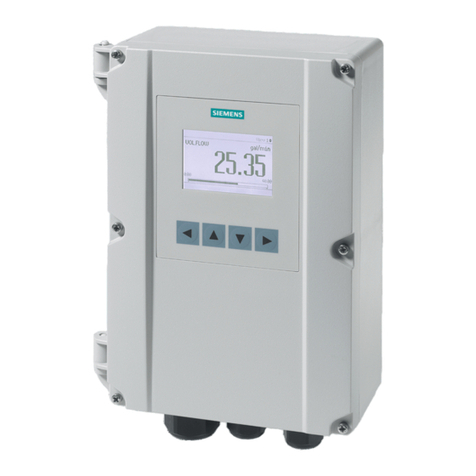
Siemens
Siemens SITRANS F operating instructions
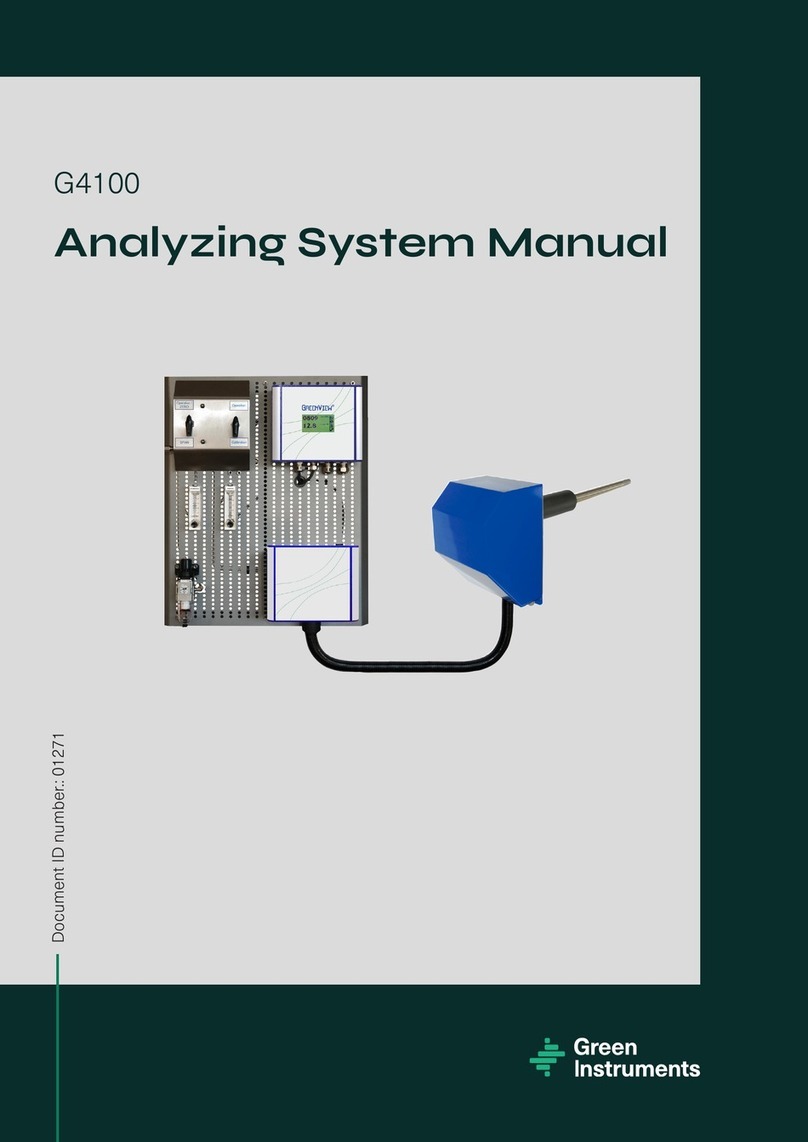
GREEN INSTRUMENTS
GREEN INSTRUMENTS G4100 manual
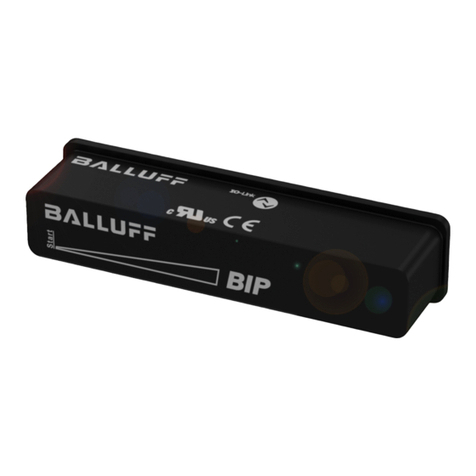
Balluff
Balluff BIP LD2-T-03-S75 Series Condensed guide
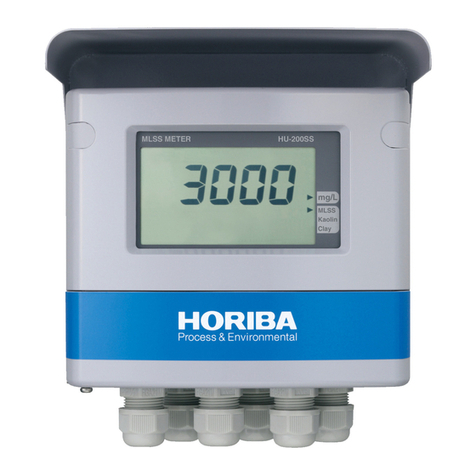
horiba
horiba HU-200SS SS-90 instruction manual
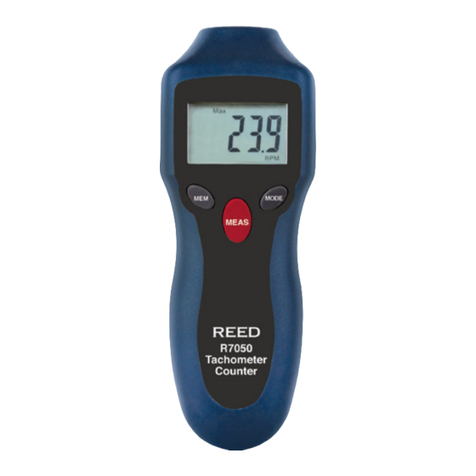
Reed Instruments
Reed Instruments R7050 instruction manual

JTS
JTS MONACOR INTERNATIONAL SIEM-111 instruction manual

